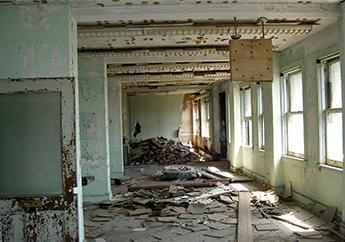
By some estimates, 300,000 to 500,000 abandoned commercial and industrial properties dot the cities, towns and counties of the United States. Often with dilapidated buildings or weed-grown open spaces, these properties have come to be known as "brownfields." The specter of hazardous chemical contamination has contributed to former owners abandoning the property, lending institutions reluctant to provide financing for purchase and redevelopment and developers avoiding the properties. Some of this real estate is located in economically blighted neighborhoods in need of jobs, or in highly desirable redevelopment areas such as waterfronts. Despite the opportunities they represent, the sites remain vacant due to real or perceived hazardous substance contamination and the liability that contamination can bring.
The department's Brownfields/ Voluntary Cleanup Program (BVCP) addresses and oversees brownfield cleanups and promotes redeveloping brownfields for the department. This is done through three different programs: Brownfield Assessments, Voluntary Cleanup and Long-Term Stewardship. More information about these programs is provided below.
If you have a piece of property you think might be contaminated with hazardous substances and you want to clean it up so it is safe, but are not sure where to start, visit the department's Information for Property Owners webpage. For a list of sites that have applied to or are participating in these programs, visit Site Specific Data. For information about incentives for redeveloping and revitalizing brownfields through the Missouri Brownfield Redevelopment Program, visit the department's Brownfields Redevelopment webpage.

